RESEARCH
My research lies at the intersection of AI and HCI. I design and develop intelligent, interactive systems and study their impact on the user's cognition, learning, and creativity. The research methodologies I apply include training deep learning models, research through design, and speculative design. The analytic methods I use include protocol analysis, thematic analysis, and statistical analysis. My foundational research is focussing on the design of cognitive and connectionist AI systems to leverage the ability of pre-trained large language models. My use-inspired areas of research include co-creativity and education.
SELECTED RESEARCH PROJECTS

|
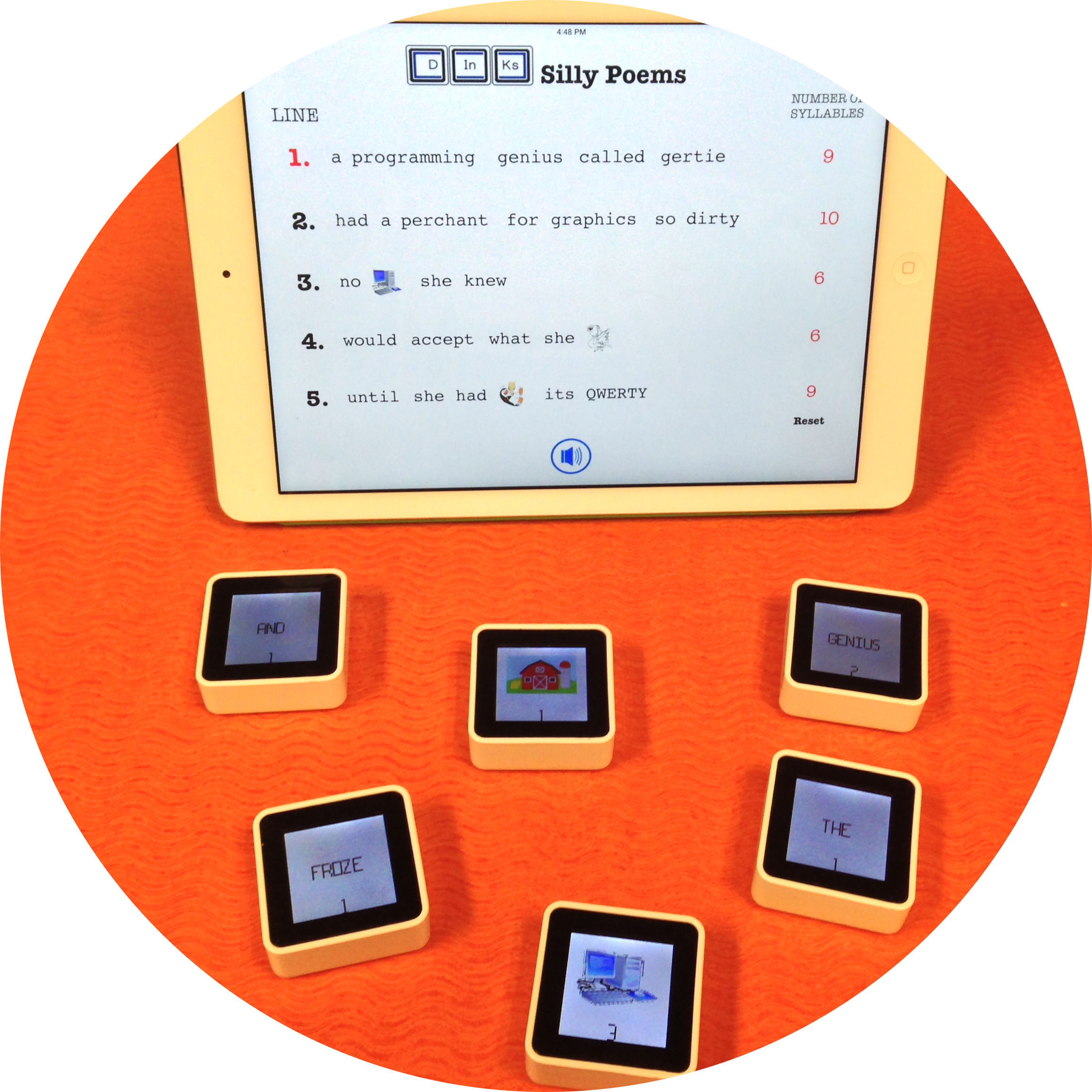
|
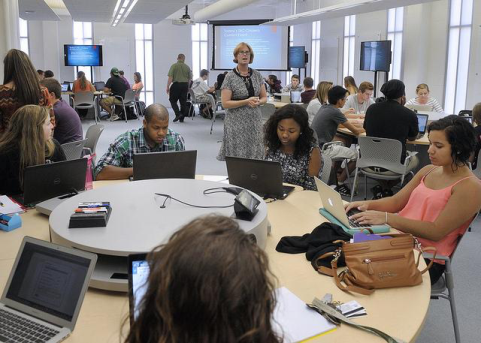
|
| NatureNet | DInKs | Connected Learner |
RESEARCH TOPICS
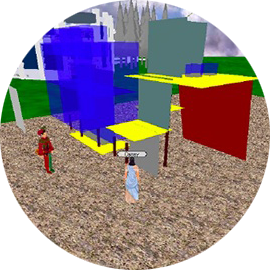
|
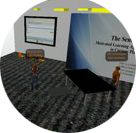
|

|

|
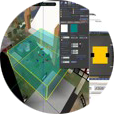
|
| Computer Supported Collaborative Work | AI and Creativity | Designing Virtual Worlds | Human-Computer Interaction | AI and Design |
Collaborative Design
My research on collaborative design has a focus on the development of new collaborative technology solutions to
supporting synchronous and asynchronous designing by enabling multi-user access to shared representations and facilitating communication.
Various studies of computer-supported collaborative design show how this process can benefit from studying how designers communicate while
using different collaborative technologies. Research in this area considers not only shared representations
and communication, but also what motivates people to participate in design challenges.
MacNeil, S., Abdellahi, S., Maher, M.L., Kim, J. G., Mahzoon, M. and Grace, K. (2018). Designing with and for the Crowd: A Cognitive Study of
Design Processes in NatureNet, International Conference on Design Computing and Cognition.
Singh, V., Abdellahi, S., Maher, M.L., Latulipe, C., (2016). The Video Collaboratory as a Learning Environment, Proceedings of the 47th
ACM Technical Symposium on Computer Science Education.
Preece, J., Boston, C., Maher, M., Grace, K., and Yeh, T. From crowdsourcing design to participatory design and back again!
Proceedings of the European Conference on Social Media, Caen, France, July 12-13, 2016.
Maher, ML., Preece, J., Yeh, T., Boston, C., Grace, K., Pasupuleti, A., Stangl, A. (2014) NatureNet: A Model for Crowdsourcing the
Design of Citizen Science Systems, Poster Abstract in Proceedings of CSCW 2014, pp201-204.
Preece, J., Grace, K., Boston, C., Maher, M. L., Yeh, T. and Stangl, A. (2014) Crowdsourcing design and citizen science data using a
tabletop in a nature preserve, European Conference on Social Media, University of Brighton, UK, pp 413-420.
Paulini, M., Murty, P. and Maher, M.L. (2013). Design processes in collective innovation communities: a study of communication, in CoDesign:
International Journal of CoCreation in Design and the Arts, 9(1):90-212.
Paulini, M., Maher, M.L., and Murty, P. (2011). The Role of Collective Intelligence in Design: A protocol study of online design communication,
in C. M. Herr, N. Gu, S. Roudavsky, M. A. Schnabel (eds.),Circuit Bending, Breaking and Mending: Proceedings of the 16th International
Conference on Computer-Aided Architectural Design Research in Asia CAADRIA 2011,pp 687-696.(pdf)
Fisher, D.H. and Maher, M.L. (2011). Free Play in Contemplative Ambient Intelligence, International Joint Conference on Ambient Intelligence, Springer.(pdf)
Maher, M.L. (2010) What People Talk About in Virtual Worlds, in William Sims Bainbridge (ed) Online Worlds: Convergence of the Real and the Virtual, Series: Human-Computer Interaction Series, Springer-Verlag ISBN: 978-1-84882-824-7
Maher, M.L. (2010). Designers and Collaborative Virtual Environments, In Xinagyu Wang and Jerry Tsai (Eds) Collaborative Design in Virtual Environments, Springer.(pdf)
Maher, M.L., Paulini, M. and Murty, P. (2010). Scaling up: From individual design to collaborative design to collective design, In John S Gero (Ed) Design Computing and Cognition DCC10, Springer, pp. 581-600. (pdf)
Murty, P., Paulini, M. and Maher, M.L. (2010). Collective Intelligence and Design Thinking, DTRS10: Design Thinking Research Symposium, Sydney, Australia. (pdf)
Maher, M.L. (2010). Evaluating Creativity in Humans, Computers, and Collectively Intelligent Systems, DESIRE10: Creativity and Innovation in Design, Aurhus, Denmark. (pdf)
AI Models of Creativity
My research in this area develops models of creativity and curiosity using machine learning techniques. We embed the models in
complex, dynamic environments such as multi-user game environments, recommender systems, and combined physical/virtual environments. This research has resulted in
a model for motivated reinforcement learning that can demonstrate cyclic emergent behavior for non-player characters in open-ended multi-user
virtual worlds. This research has also been the basis for developing curiosity-inspired recommender systems, a curious information display, and the 3D willful marionette.
Fu, Z., Niu, X., Maher, M.L. (2023). Deep Learning Models for Serendipity Recommendations: A Survey and New Perspectives ACM Computing Surveys, Vol. 1, No. 1, Article 1. Publication date: June 2023.
Grace, K., Maher, M.L., Davis, N., Eltayeby, O. (2018). SurpriseWalks: Encouraging Users Towards Novel Concepts With Sequential Suggestions,
International Conference on Computational Creativity.
Niu, X. Abbas, F., Maher, M.L. and Grace, K. (2018). Surprise Me if You Can: Serendipity in Health Information, ACM CHI Conference on
Human Factors in Computing Systems, 2018.
Grace, K., Grace, S., Maher, ML., Locurto, L., Outcault, B. (2017). The Willful Marionette: Exploring Responses to Embodied Interaction, In Proceedings of Creativity and Cognition 2017
Grace, K., Maher, M.L. (2016) Surprise-triggered Reformulation of Design Goals, Proceedings of AAAI.
Grace, K., Maher, M.L., Wilson, D., Najjar, N. (2016) Personalised Specific Curiosity for Computational Design Systems,
Proceedings of Design Computing and Cognition.
Grace, K., Maher, ML., Wilson, D.C., and Najjar, N.A. (2016) Combining CBR and Deep Learning to Generate Surprising Recipe
Designs, International Conference on Case-Based Reasoning, Springer International Publishing, pp 154-169.
Grace, K. and Maher, M.L. (2015). Specific Curiosity as a Cause and Consequence of Transformational Creativity, Proceedings of the Sixth
International Conference on Computational Creativity, Park City Utah, pp. 260-267. http://computationalcreativity.net/iccc2015/proceedings/ICCC2015_proceedings.pdf
Maher, M.L., Merrick, K. and Graham, B. (2011). Reasoning in the Absence of Goals, AAAI Fall Symposia Series: Advances in Cognitive Systems Technical Report, AAAI Press.(pdf)
Merrick, K. and Maher, M.L. (2009). Motivated Reinforcement Learning: Curious Characters for Multiuser Games, Springer-Verlag:Berlin/Heidelberg.
Merrick, K., Maher, M.L.: (2009) Motivated Learning from Interesting Events: Adaptive, Multitask Learning Agents for Complex Environments, Adaptive Behaviour, SAGE Publications, Peter M. Todd (Ed.), Vol 17(1):7-27.
Gu, N and Maher, ML (2007). Designing Curious Places: Digital and Computing Technologies in the Workplace, in Calder J (ed), Public #3 - Worklife, Melbourne: WoodsBagot Research Press, 101-115.
Maher, M. L., Merrick, K. and Saunders, R. (2007). From Passive To Proactive Design Elements: Incorporating Curious Agents Into Intelligent Rooms. in Proceedings of CAADFutures 2007.
Merrick, K. and Maher, M.L. (2006). Motivated Reinforcement Learning for Non-Player Characters in Persistent Computer Game Worlds, in ACM SIGCHI International Conference on Advances in Computer Entertainment Technology, ACE 2006, July 14-16, Hollywood, CA, USA, CD publication, no page numbers.
Maher, M.L., Merrick, K. and Macindoe, O. (2006). Intrinsically Motivated Intelligent Sensed Environments, EGICE 2006, Springer-Verlag, Berlin, pp 455-475.
Designing and Learning in Virtual Worlds
My research in this area started with the availability of MUDS and MOOS
and now involves extensions and applications for 3D virtual worlds such as Active Worlds
and SecondLife. This research has resulted in principles for designing virtual places that
take the perspective of architectural design and the extension of virtual worlds to include
agent models for design, curious, and emergent interactive behaviors.
Singh, V., Abdellahi, S., Maher, M.L., Latulipe, C., (2016). The Video Collaboratory as a Learning Environment,
Proceedings of the 47th ACM Technical Symposium on Computer Science Education.
Maher, M.L., Simoff, S., and Cicognani, A. (2000). Understanding Virtual Design Studios, Springer-Verlag, London. 235p.
Maher, M.L. and Fruchter, R. (2007). Support for design teams Artificial Intelligence for Engineering Design, Analysis and Manufacturing, 21(3):201-202.
Maher, M.L., Rosenman, M. and Merrick, K. (2007). Agents For Multidisciplinary Design In Virtual Worlds, Artificial Intelligence for Engineering Design, Analysis and Manufacturing, 21(3):267-277.
Gu N., Gul L. F., Maher M. L. (2007). Designing and Learning Within the Design: A Case Study of Principles for Designing and Teaching 3D Virtual Worlds, in CAADRIA 2007: Proceedings of the 12th International Conference on Computer-Aided Architectural Design Research in Asia, Nanjing, China, pp. 127-132.
Maher, M.L., Gul, L.F. and Bilda, Z. (2006). Studying Design Behaviour in Collaborative Virtual Environments, In R. N. Pikaar & E. A. P. Koningsveld & P. J. M. Settels (eds), Proceedings of 16th World Congress on Ergonomics ( IEA2006 Congress). Maastricht, Netherlands: Elsevier, Ltd. CD publication, no page numbers.
Maher, M.L., Bilda, Z. and Gul, L.F. (2006). Impact of Collaborative Virtual Environments on Design Behaviour , in JS Gero (ed), Design Computing and Cognition'06, Springer, Dordrecht, The Netherlands, pp 305-321.
Rosenman, M., Merrick, K., Maher, M.L. and Marchant, D. (2006). DESIGNWORLD: A Multidisciplinary Collaborative Design Environment Using Agents in a Virtual World, in JS Gero (ed), Design Computing and Cognition'06, Springer, Dordrecht, The Netherlands, pp 695-710.
Interaction Design for Enhancing Human Creativity
My research in interaction design for enhancing human creativity studies the impact of new AI and HCI techniques on creativity and design.
This research has resulted in prototype systems that are
evaluated using protocol analysis to determine the impact of AI and interaction modality on spatial reasoning
and design cognition.
Rezwana, J., & Maher, M. L. (2022). Designing Creative AI Partners with COFI: A Framework for Modeling Interaction in Human-AI Co-Creative Systems. ACM Transactions on Computer-Human Interaction. https://doi.org/10.1145/3519026
Rezwana, J., and Maher, M.L. (2022). Understanding User Perceptions, Collaborative Experience and User Engagement in Different Human-AI Interaction Designs for Co-Creative Systems, Proceedings of Creativity & Cognition. https://doi.org/10.1145/3527927.3532789
Rezwana, J. and Maher, M.L. (2022). Identifying Ethical Issues in AI Partners in Human-AI Co-Creation, CHI 2022 Workshop on Generative AI and HCI, https://generativeaiandhci.github.io/
Maher, M.L., Magerko, B., Ventura, D., Fisher, D., Cardona-Rivera, R., Fulda, N., Gero, J., Lee, M., Wilson, D., Kaufman, J., Kunda, M, Muller, M., Bellamy, R. Ackerman, M., Chrysikou, E. (2022). A Research Plan for Integrating Generative and Cognitive AI for Human Centered, Explainable Co-Creative AI, CHI 2022 Workshop on Generative AI and HCI, https://generativeaiandhci.github.io/
Kim, J., Maher, M.L., and Siddiqui, S. (2021). Collaborative Ideation Partner: Design Ideation in Human-AI Co-Creativity. CHIRA2021: 5th International Conference on Computer-Human Interaction, Research, and Applications.
Kim, J. and Maher, M.L. (2021). Evaluating the Effect of Co-Creative Systems on Design Ideation, 2021 Proceedings of International Conference on Computational Creativity. https://computationalcreativity.net/iccc21/proceedings/
Rezwana, J. and Maher, M.L. (2021). COFI: A Framework for Modeling Interaction in Human-AI Co-Creative Systems, 2021 Proceedings of International Conference on Computational Creativity. https://computationalcreativity.net/iccc21/proceedings/
Karimi, P., Grace, K., Davis, N., Maher, M.L. (2018). Creative Sketching Apprentice: Supporting Conceptual Shifts in Sketch Ideation, International Conference on Design Computing and Cognition.
Kim, J. G., Maher, M.L., Lee, L. (2018). The effect of tangible interaction on spatial design tasks. International Conference on Design Computing and Cognition.
Maher, M.L. and Lee, L. (2017). Designing for Gesture and Tangible Interaction, Morgan-Claypool Publishers, doi:10.2200/S00758ED1V01Y201702HCI036.
Maher, M.L., Gero, J.S., Lee, L., Yu, R., Clausner, T. (2016) Measuring the Effect of Tangible Interaction on Design Cognition, Proceedings of HCI International.
Maher, M.L., Lee, L., Gero, J.S., Yu, R., Clausner, T. (2016) Characterizing tangible interaction during a creative combination task, Proceedings of Design Computing and Cognition.
Maher, M. L., Gonzalez, A. Grace, K., Clausner, T. (2014). Tangible Interaction Design: Can we design tangibles to enhance creative cognition?. In Gero, J.S. and Hanna, S (eds) Poster Proceedings of Design Computing and Cognition 2014, University College London.
Kim, M. J. and Maher, M.L. (2008). The Impact of Tangible User Interfaces on Designers' Spatial Cognition, Human-Computer Interaction A Journal of Theoretical, Empirical, and Methodological Issues of User Science and of System Design, Volume 23 Issue 2, 101-137. http://dx.doi.org/10.1080/07370020802016415
Kim, M. J. and Maher, M.L. (2008). The Impact of Tangible User Interfaces on Spatial Cognition During Collaborative Design, Design Studies, Vol 29/3 pp 222-253. http://dx.doi.org/10.1016/j.destud.2007.12.006
Kim, M.J. and Maher, M.L. (2007). Collaborative Design in a Tabletop System employing Tangible User Interfaces , in Proceedings of the 11th International Conference on Computer Supported Cooperative Work in Design, W. Shen (Ed.), IEEE.
Maher, M.L. and Kim, M.J. (2006). Studying Designers Using A Tabletop System For 3D Design With A Focus On The Impact On Spatial Cognition, in M. Fjeld and M. Takatsuka (eds) First IEEE International Workshop on Horizontal Interactive Human-Computer Systems, Tabletop 2006, Adelaide, Victoria, Australia, IEEE, pp 105-112.
Kim, M.J. and Maher, M.L. (2007). Collaborative Design in a Tabletop System employing Tangible User Interfaces , in Proceedings of the 11th International Conference on Computer Supported Cooperative Work in Design, W. Shen (Ed.), IEEE.
Computational and Cognitive Models of Design
My research in this area started with my PhD thesis in artificial intelligence in design.
It has evolved over the years to consider a broad range of computational models that have the potential
to model the processes associated with creative design. This research has resulted in several computational
models that have been demonstrated to show their potential as designers and more recently to provide models
for understanding human designers through design cognition studies.
Grace, K., Maher, M.L., Mohseni, M., P´erez y P´erez, R. (2017) Encouraging p-creative behaviour with computational curiosity, In Proceedings of International Conference on Computational Creativity.
Grace, K. and Maher, M.L. (2015). Surprise and Reformulation as Meta-cognitive Processes in Creative Design,
Proceedings of the Third Annual Conference on Advances in Cognitive Systems, Atlanta Georgia, pp. 1-16.
Maher, M.L., Merrick, K., Wang, B. (2015). Reasoning and Making Sense of Data in the Absence of Goals,
Third Annual Conference on Advances in Cognitive Systems, Workshop on Goal Reasoning.
Gero, JS and Maher ML (eds) (2005). Computational and Cognitive Models of Creative Design VI, University of Sydney, 377p.
Maher, M. L. and Pu, P. (eds) (1997). Issues and Applications of Case-Based Reasoning to Design, Lawrence Erlbaum Associates, New Jersey, 345p.
Maher, M.L., Balachandran, B., Zhang, D.M. (1995). Case-Based Reasoning in Design, Lawrence Erlbaum Associates, New Jersey, 246p.
Gero, J. S. and Maher, M. L. (eds) (1993). Modeling Creativity and Knowledge-Based Creative Design, Lawrence Erlbaum Associates, New Jersey, 354p.
Maher, M.L. (2007). The Synergies Between Design Computing and Design Cognition, in Computing in Civil Engineering, L. Soibelman and B. Akinci (Eds), American Society of Civil Engineers.

